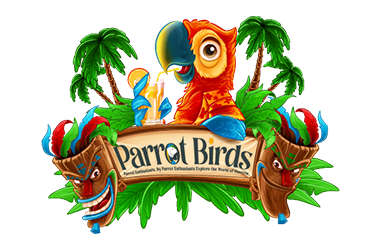Menu Home Parrot Macaw Parrot Cockatoos Parrot Cockatiel Parrot Care...
Read More


The Blue & Gold Macaw
A Striking Symbol of South America’s Rainforest
Introduction
The blue-and-gold macaw (Ara ararauna), also known as the blue-and-yellow macaw, is a large and vibrant parrot native to the tropical rainforests of South America. With its striking plumage of royal blue and vibrant gold, this magnificent bird is one of the most recognizable and beloved parrots in the world.
Appearance & Habitat
Blue-and-gold macaws are among the largest parrots, with a total length of around 35 inches (90 cm) and a wingspan of up to 45 inches (114 cm). Their bodies are predominantly blue, with a vibrant green forehead and a striking black patch under their beaks. Their undersides, including their chests and bellies, are a rich golden yellow, creating a stunning contrast against the blue plumage.
These majestic birds inhabit the lush rainforests of eastern Panama, Colombia, Venezuela, the Guianas, Peru, Bolivia, and Brazil. They prefer tall trees in the canopy of the rainforest, where they find food and shelter from predators.
Diet and Social Behavior
Blue-and-gold macaws are primarily herbivores, with a diet consisting of nuts, fruits, seeds, and flowers. They use their powerful beaks to crack open nuts and seeds, and their strong tongues to reach deep into flowers to extract nectar.
These parrots are highly social creatures, living in pairs or small flocks. They are known for their loud and raucous calls, which can be heard from miles away. These calls serve various purposes, including communication, territorial defense, and attracting mates.
Intelligence and Mimicry
Blue-and-gold macaws are among the most intelligent parrots, known for their ability to learn and mimic human speech. They can mimic words, phrases, and even entire sentences, and they often use this ability to interact with their caretakers.
Threats & Conservation Status
Despite their widespread distribution, blue-and-gold macaws are facing several threats, including habitat loss due to deforestation, illegal pet trade, and competition from introduced species. As a result, their population has declined significantly, and they are now classified as Least Concern on the IUCN Red List of Threatened Species.
Conservation Efforts
Several conservation efforts are underway to protect blue-and-gold macaws and their rainforest habitats. These efforts include:
Establishing protected areas: Creating national parks and other protected areas to safeguard the rainforest habitats of blue-and-gold macaws.
Promoting sustainable forestry practices: Encouraging sustainable forestry methods to reduce deforestation and protect the rainforest ecosystem.
Captive breeding programs: Establishing captive breeding programs to increase the population of blue-and-gold macaws and reintroduce them to their natural habitats.
Raising public awareness: Educating the public about the importance of conserving blue-and-gold macaws and their rainforest habitats.
Conclusion
The blue-and-gold macaw is a magnificent creature that plays a vital role in the rainforest ecosystem. Their intelligence, social behavior, and striking plumage make them a beloved symbol of South America’s natural beauty. By supporting conservation efforts, we can ensure that these remarkable birds continue to grace the skies of the rainforest for generations to come.
Budgerigars Unveiled
Menu Home Parrot Macaw Parrot Cockatoos Parrot Cockatiel Parrot Care...
Read MoreAll rights reserved . Copyright © 2024 parrot-birds.com






